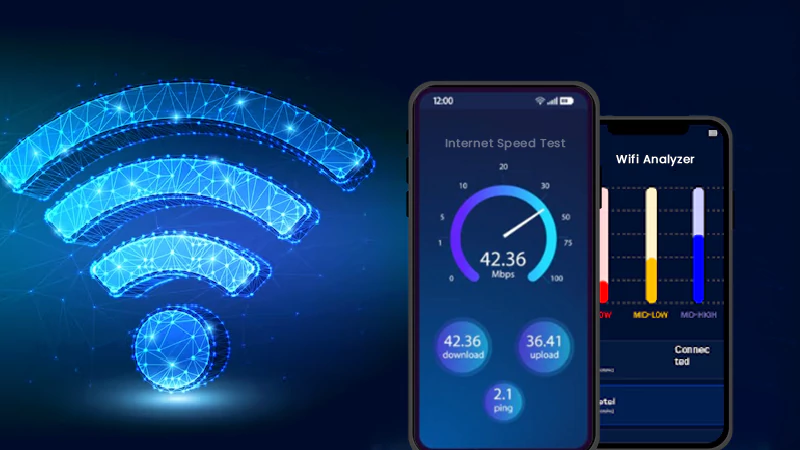The Working of Different Kinds of Night Vision Devices
Night vision is an ability that we humans are not blessed with. Unlike wild animals, our civilization is meant to work during the day and rest at night. Since we do not have to hunt for our food like beasts, our capability to see in the dark is not as accurate as theirs.
However, it does not mean we can get left behind by anyone in the race. If they have more powerful eyes, we have got more powerful brains. Developed science and technology have enabled us humans to achieve various achievements. With the help of these generational advancements, there is nothing left that those other species can do but we cannot. We can fly high in the sky, travel faster than them, and can obtain our food more comfortably, just because of science and tech.
Just like that, we have also arranged a way to obtain sight in the dark. Although we cannot do it with our bare peepers, we take help from night vision devices like thermal devices and others. These are special instruments that are developed after a number of research and engineering experiments. Therefore, we are going to dive deep into the engineering of these gadgets and will try to understand how they work.
Science of Night Vision
To start this discussion, we will initiate our topic by understanding the science behind the biased phenomenon that allows beasts and birds to have clear sight in the dark.
You might have noticed whenever you click photos of your pet or turn your flashlight on in the dark, their eyes start shining and it looks like they are emitting some kind of creepy light out of their. Well, this is one of the main causes behind this ability.
The basic structure of every being’s eyes is mostly the same. Just like human beings, animals also have pupils but are slightly bigger than us. Their pupils open far wider than ours. This lets more light enter their vision.
Another reason is the rod cells in their peepers. Animals who hunt in the dark tend to have more rod cells than the animals like humans who majorly carry out their business during daylight. These rod cells are responsible for capturing the light traveling through the eyes.
Now, as you know what are the aspects that affect this power of night vision, we will discuss the technologies that allowed us to match our capabilities with their.
How Night Vision Devices Work?
The science behind the working of these instruments has too many technicalities behind it. If you are not an expert in the field of vision, you might face some difficulties in understanding their functioning. However, we have made it easier for you to grasp.
These devices use 3 types of techs:
- Optoelectronic Image Enhancement
- Thermal Image Enhancement
- Digital Image Enchancement
You will get to know about them step-by-step.
Optoelectronic Image Enhancements
The term might haunt you with its unique pronunciation, but indeed it is very simple and easy to understand. If you have ever played any game like Cal of Duty or any other game that revolves around military operations, you must have encountered some scenes where the screen turns green.
This is what how it looks like through a night vision device. The traditional devices use a technique called optoelectronic image enhancement in which an element called a photocathode is taken into use to generate light out of the pitch-black darkness.
You might not be aware of the fact that the light you see actually contains photons. In dark areas, these photos are converted into electrons with the help of photocathode rodes which boosts their numbers and forward them further. This is why we are able to see things through night vision glasses. But how come they are always green? It is because since photons (particles that carry colors with them) are converted into electrons, the generated image comes out monochromatic or black and white, without any color.
To eliminate this problem, a Phosphor screen is used to give these colorless rays a slight hue of green. The image given below clearly shows the functioning of a night-vision lens.
Thermal Image Enhancement
The name says it all. Thermal imaging uses the heat emitting from an object or a person and compares it to the surroundings to form an image. Sometimes this technique is compared to night vision technology and considered different from it, but the sole purpose behind both of them is the same.
Everything that exists on this Earth emits infrared rays. Thermal devices are equipped with infrared receptors that capture these rays and compare them with the surroundings. The hotter an object is, the redder the image gets. These receptors convert the infrared data and display the temperature of the object in front. The more they get advanced, their magnification, digital zoom, and other features enhance.
As of now, you can get an average decent quality infrared lens for around $1500 from Plomo Tactical.
Digital Image Enhancement
Digital image enhancement is a rather more advanced technology getting used in night vision gadgets. These new image-generating techniques build lighter more efficient and more versatile types of equipment. Except it involves some more electrical processes to generate an image.
It all starts at the moment when light rays enter into the lenses from the source. These rays are generated into a number of digital signals with the help of Metal-Oxide Semiconductors, also known as CMOS sensors. Once they get converted into signals, they are then assembled into an image which then gets enhanced electronically.
The night-vision equipment with more advanced technology would be able to generate more accurate and clear outcomes of pictures for the viewer. Once this image is generated, it then gets displayed on the screen for the viewers. This is such a fast process that all these things happen in just a matter of an eye blink.
With more versatile automation, night gadgets nowadays are able to generate 1080p full HD images and videos. They have even been involved with some state-of-the-art features like SD Card compatibility, USB drive and even streaming capability to stream the complete view on mobile or computer screens.
Wrapping Up
Nowadays, Night vision is not a big deal for us humans. This facility is now available even in toys. Although, it is quite impressive how far our technological advancements have led us. We can have clear sight in the dark too. This equipment that allows us to see in a pitch-black environment is available in binoculars, lenses, cameras, goggles, and whatnot.
The tech was invented with keeping a focus on military needs, but now it is so common that you can get your hands on a piece just by a few clicks on the internet. These cool pieces of equipment start from as low as $100 sold as a toy at Walmart, up to $5000 high-tech scoped and lenses to provide you with an eagle-sight even in the darkness.
Exploring Common 2-Story Houses Energy Usage Patterns and…
How Long Does It Take to Obtain An…
The Secrets Behind High-Performance Racing Windows
Co-Parenting Strategies for Divorced or Separated Parents in…
How Auto Lawyers Help Victims of Distracted Driving…
How Can an Attorney Help in a Trucker…
What is the Rule of Thumb for Pipes?
Best DVD Rippers for Windows & Mac: Free…
Reducing the Impact of Unexpected Construction Expenses
8 Ways to Improve Wi-Fi Speed and Stability…
What Information Can Be Gleaned From a Funnel…
Essential Strategies to Make Hotel Management Easier












